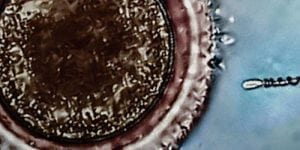Researchers are finding that more women are opting to postpone pregnancy plans with the goals to establish their own careers and foundations—a factor that is resulting in them taking longer to conceive naturally. This aspect can and often does ultimately lead them to prematurely seeking fertility treatment. At the same time, scholars have observed that infertility is comparatively common, occurring in approximately 11 percent of reproductive-aged individuals. Ironically, data from recent studies have indicated that clinics are having a “free for all” when it comes to add-on treatments, i.e. additional treatments offered alongside traditional treatment procedures such as in vitro fertilization (IVF) to increase its success, at the expense of patients desperate to conceive.
Not only are these add-ons increasing in their application, researchers from Oxford University have found that most IVF add-ons are not supported by sufficient evidence of their success.
Add-on Fertility Treatments
Add-on fertility treatments are comprised of a wide variety of features. One popular example is pre-implantation genetic screening. With this method, the chromosomes of conceived embryos are partitioned for genetic abnormalities and other conditions. Authors Heneghan C, Spencer EA, and Bobrovitz N stated that in this particular process, the “mock” embryo is transferred along with various medical treatments, including testing for blood clotting and invulnerability.
These type of treatments have been proposed as medical procedures designed to increase the likelihood of conception by child-bearing age individuals. The Oxford team spent a year searching claims made about various add-on treatments available at UK clinics, researching more than 70 websites. Upon completing their research, they identified 27 treatments that are considered to be add-ons. Of these 27 treatments, 26 of them were not backed up by good scientific evidence of success.
The list of these treatment types include:
- Genetic screening tests
- Blood tests proposed to measure the immune system
- Supplementary drugs
- Intralipid infusions
- Embryo glue
- Blastocyst cultures
- Assisted hatching
Of the 27 treatment add-ons, the one treatment that was supported by moderate quality evidence was that of endometrial scratching. The procedure involves scratching the uterine lining to increase the likelihood that an embryo will be able to attach itself in the uterus.
Are they worth the price?
This particular decision-making process is critical to many families because the cost of each individual method can range depending on the additional interventions, making them far from affordable. This aspect brings many couples to a crossroad between going into debt for treatment or for the additional add-ons.
Does science show they are effective?

Moreover, earlier this year, investigators warned that 50 percent of all women who were recipients of fertility prescription treatments did not need assistance with becoming pregnant in the first place. These findings also suggested that those individual women were subject to become victims of corruption by private clinics.
In their desire for a baby, people seek treatment from an assortment of private fertility clinics. Unfortunately, most couples fall into vulnerable situations in which they rely heavily on the direction of health professionals. The risk is that there is very little data supporting the notion that a small quantity of treatments can actually improve live birth rates; even then, those underlying studies have proven to be comprised of quality issues.
While being suckered into being taken advantage of when it comes to add-on treatments is not a guarantee when seeking fertility assistance, individuals seeking fertility treatment should rely on additional resource and outside sources before making any decisions on their treatment plan.





